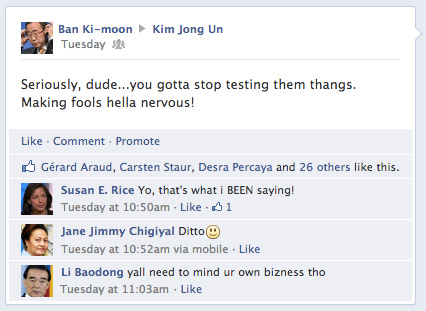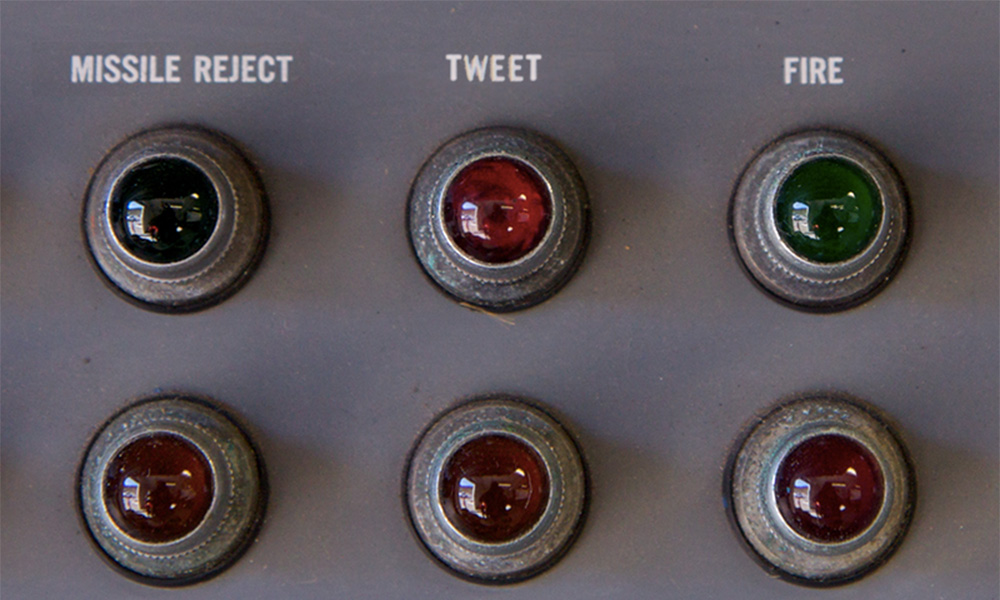
Nuclear diplomacy through social media isn’t just “point and click.”
The arms control world recently met social media and is now furiously in love. But to harness the power of social media, policy wonks need to first learn how to use it effectively. If done successfully, it might just give ordinary citizens the chance to partake in nuclear policy and unleash their inner James Bond.
Earlier this year, NPR reported on the growing trend of U.S. Ambassadors using Facebook and Twitter to raise public consciousness on global security issues. Although the story was a blip in the web, the concept of melding international security with social networking is gaining ground.

Despite the accusations of skeptics, proponents of social media don’t actually expect it to be a surrogate for person-to-person diplomacy.
Policy wonks have come to appreciate the transformative effects of social media in these last several years, most recently with the Arab Spring. Social media platforms grant instant presence in places thousands of miles away and generate new data that reveal nuanced perspectives and trends. Twitter users are able to predict violent hotspots in the Middle East. An iPhone app coupled with the power of a social network can help during emergency preparedness and response. With so many people willing to become data points, analysts and experts can create new analytical tools to enhance understanding of our fuzzy, chaotic world.
Can we replicate the achievements on social media tools for arms control verification efforts? Possibly. Ms. Rose Gottemoeller, U.S. Acting Under Secretary of State for Arms Control and International Security and Renaissance woman of “State Department 2.0,” is spearheading the effort, encouraging policymakers to re-imagine a world in which U.S. and Russia can negotiate arms reductions through social networking tools. She advocates the use of social media for “social verification:” having ordinary people help verify that countries are compliant with their arms control commitments. “Social verification” is an open invitation for common citizens to help governments with arms control by reporting suspicious activities or equipment through an iPhone app. Not quite sure how this would be implemented, but the idea is out there and policymakers are excited.
But before techies brainstorm new gadgets and policymakers explore the frontier of digital statecraft, a definition of social media is in order. Social media is a subset of new media that relies on an interactive space and a self-sustained community created by the global public. The effectiveness of social media relies on all types of people – from Joe Six-Pack to Henry Kissinger – to get involved.

Social verification – there’s not an app for that.
And with that, the State Department must achieve public apathy and momentum for the arms control cause. Social media was an effective tool during the recent revolutions because it visualized human struggle and fostered a global dialogue. Human strife stirred people into action and social media facilitated the deed. But the arms control field currently lacks the human connection necessary to catalyze action. After all, it is easier to be moved by scenes of warring communities than a group of important-looking people huddled over an arms control treaty.
To make social verification a reality, the primary focus shouldn’t be on conceptualizing new technologies, but building public awareness of arms control issues through education. This can be done using social media platforms and it should start with the basics so that ordinary people can care and contribute. Instead of expending resources on developing treaty violation censor technology for smart phones, perhaps it would be wiser to invest in resources that simply explain what the treaty is about. Once people have a knowledge base, then we can start developing gadgets to make social verification possible.
We shouldn’t gloss over the “social” in social media. Skipping the masses would make the idea futile. And who knows — engaging civil society might just lead to a world where ordinary citizens can shape nonproliferation and arms control policy.
MORE:
From the Manhattan Project to the Cloud: Arms Control in the Information Age
Acting Under Secretary of State for Arms Control and International Security Rose Gottemoeller
27 October 2011
A New Weapon Against Nukes: Social Media
National Public Radio
8 February 2012
Revisiting The Promise of Societal Verification in the Age of Social Media
Bryan Lee — WMD Junction
22 February 2013


It will definitely be interesting to see how governments navigate issues of quality management to “verify the (social) verification.” Take this one from Apr 2, 2013:
US Embassy Cairo: posts a link to Jon Stewart criticizing Morsy for the arrest of Stewart’s satirist-of-all counterpart in Egypt, Bassem Youssef.
Egyptian Presidency: @USEmbassyCairo @TheDailyShow @DrBassemYoussef It’s inappropriate for a diplomatic mission to engage in such negative political propaganda.
http://www.egyptindependent.com/news/govt-fires-back-us-embassy-tweet-video-criticizing-morsy